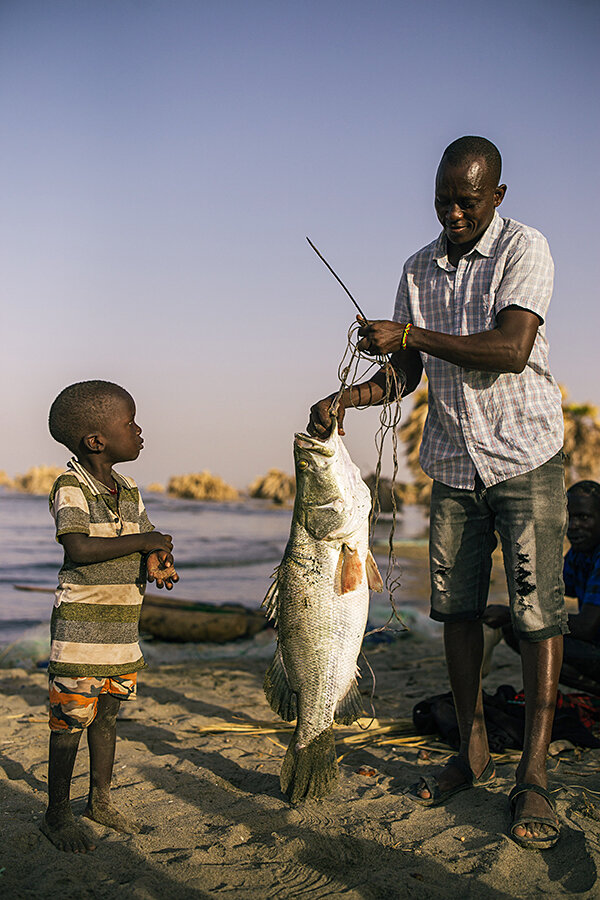In Pictures: Making a living on the world’s largest desert lake
Loading...
| TURKANA COUNTY, KENYA
Colin Pili is up early. At dawn, he pushes his boat onto the misty surface of Lake Turkana to try his hand out on the water. He learned to fish from his father, he says, and moved to these shores 30 years ago after his cattle died from poor pasture conditions.
The arid parts of Kenya are unforgiving. Five rainy seasons have failed since 2020. And yet, several ethnicities of traditional pastoralists still build their livelihoods here around the world’s largest desert lake. Many, like Mr. Pili, have had to adapt.
Why We Wrote This
A story focused onUnforgiving climates make persistence essential. As conditions change on the shores of Kenya’s Lake Turkana, the world’s largest desert lake, local pastoralists have learned to adapt.
In Nangitony, a remote outcrop on the lake’s western shore, Paulina Asurut guts Nile perch on a sandbar. She’s an orphan and a single mother, she says, and has no one to give her livestock.
But in a small village like hers, resources are shared. She’ll be supported by her neighbors – a reflection of the way of life endemic to this unique arid ecosystem, one born of survival.
Colin Pili is up early. At dawn, he pushes his boat onto the misty surface of Lake Turkana to try his hand out on the water. He learned to fish from his father, he says, and moved to these shores 30 years ago after his cattle died from poor pasture conditions.
These arid parts of Kenya are unforgiving. Five rainy seasons have failed since 2020. And yet, several ethnicities of traditional pastoralists still build their livelihoods here around the world’s largest desert lake. Many, like Mr. Pili, have had to adapt.
Livestock are the traditional backbone of pastoral culture – those without animals are called ngikebotok, meaning “those who have nothing.” But that share of the population is growing.
Why We Wrote This
A story focused onUnforgiving climates make persistence essential. As conditions change on the shores of Kenya’s Lake Turkana, the world’s largest desert lake, local pastoralists have learned to adapt.
Fish are now the main source of protein. And weekly markets where vendors hawk everything from cellphone chargers to acacia pods for goat fodder are fueling a population rise along the Turkwel River, which flows into the lake.
Pastoralists have the capacity to adapt to alternate livelihoods, and boom and bust cycles have long dictated the pace of life. But encroaching human development also challenges these communities: A dam built in neighboring Ethiopia on Lake Turkana’s main tributary altered the seasonal pulses that signal breeding and migration season to the fish.
Mr. Pili does not expect all his children to follow in his footsteps. Some of them go to school, he says. A few may attend university, turning away from the unpredictability of a fisher’s life.
In Nangitony, a remote outcrop on the lake’s western shore, Paulina Asurut guts Nile perch on a sandbar. She’s an orphan and a single mother, she says, and has no one to give her livestock.
But in a small village like hers, resources are shared. She’ll be supported by her neighbors – yet another reflection of the way of life endemic to this unique arid ecosystem, one born of survival.
The reporting for this story was supported by a grant from the Pulitzer Center on Crisis Reporting.














